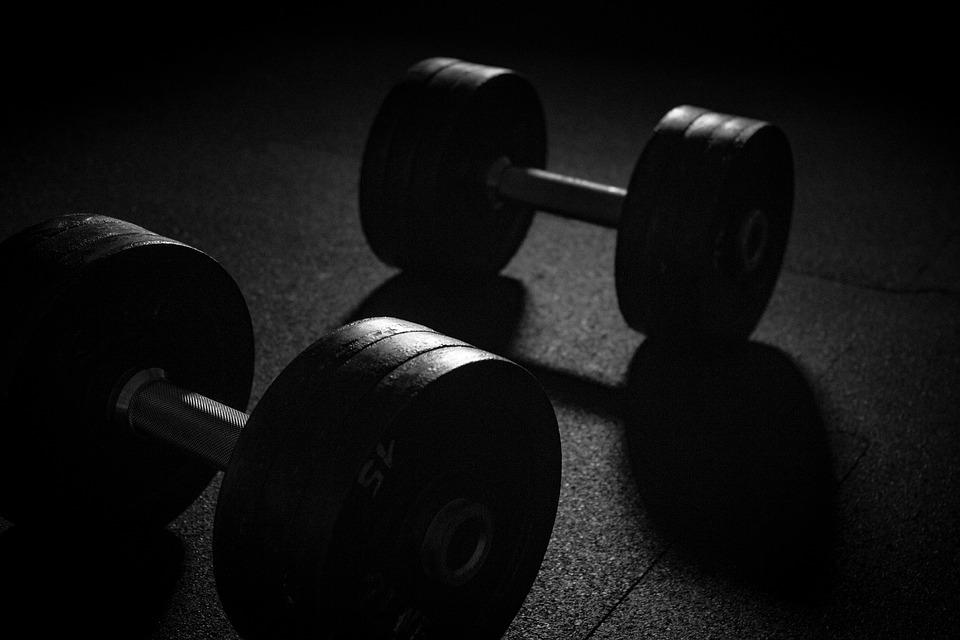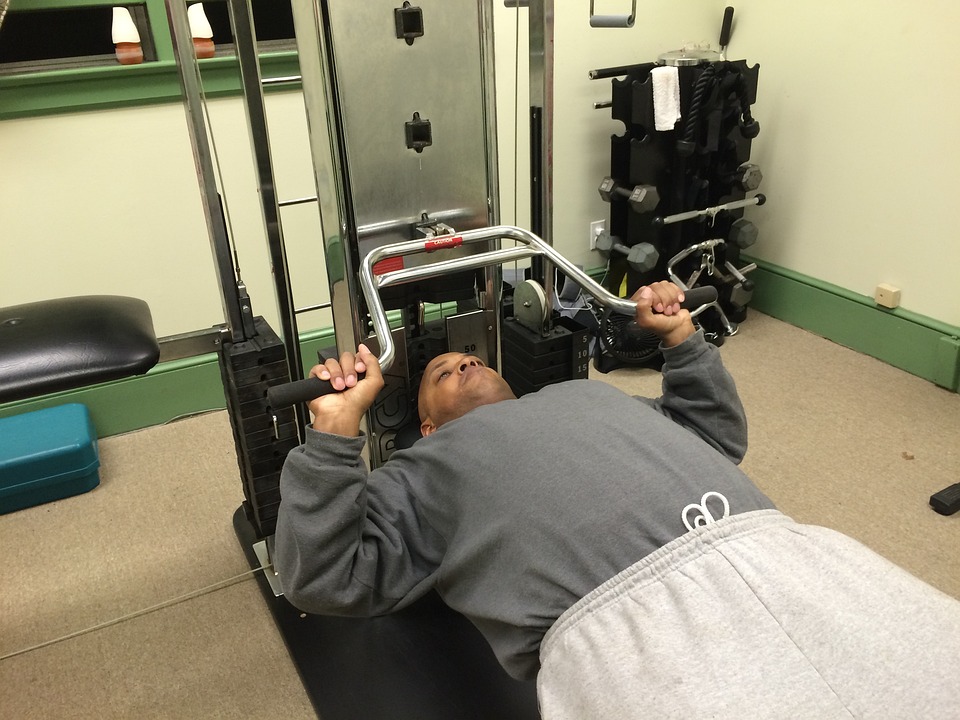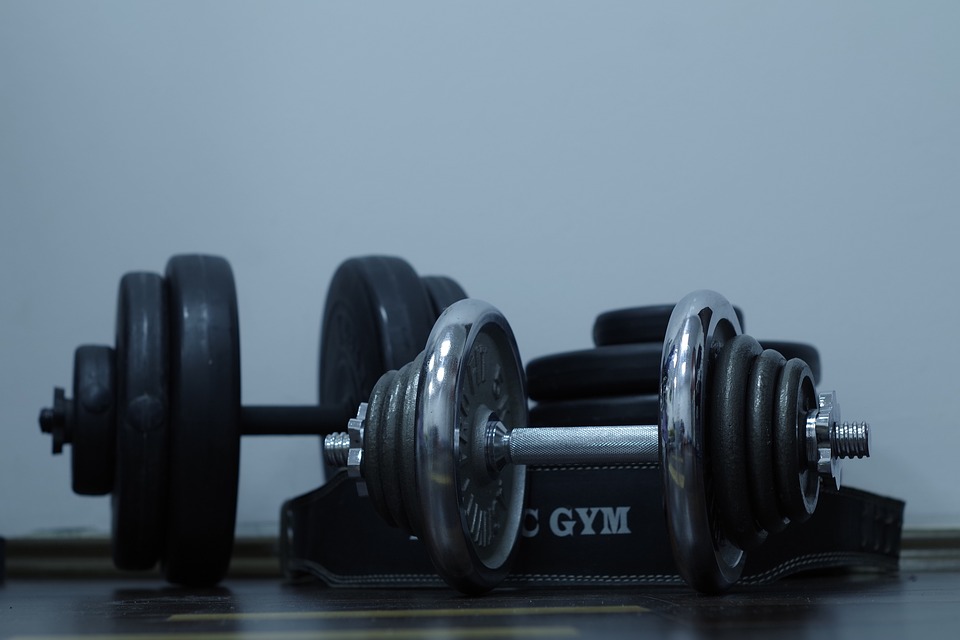
You’ve seen the headlines touting strength training. But what about beginner strength training workouts for women?
If you are inexperienced in exercising, you may feel apprehensive entering a gym and attempting to construct your own exercise regimen. Trying to decide what the optimum strength training exercises for women who are just starting out can be challenging.
Beginning any health and fitness venture can be one of the most difficult parts. It is essential to have an organized outline from the beginning that will produce positive outcomes beginning with the initial day.
Have a look at this comprehensive, at-home dumbbell workout for women — it’s a good, swift exercise for strength building!
Beginner Strength Training Exercises for Women
The following 10 exercises involve using a mix of machines, free weights, and movements that require just your bodyweight to really challenge the muscles.
Dumbbell Squats
Squats are the ultimate lower body exercise. This effort is intended to help create robust lower limbs by engaging the quads, hamstrings, buttocks, and calves.
Begin with free weights rather than a barbell to help you learn and master the exercise while keeping the potential for injury low. While gripping a weight in each hand, descend into a squat, being careful that your knees do not go over your toes.
Lower your body until your legs are fairly level with the ground.
Perform three sets of 10-12 reps.
Push-Ups
Don’t let the simplicity of this movement fool you. Push-ups are an excellent upper body workout for both those new to fitness and those experienced in it, targeting your pecs, biceps, deltoids, and midsection.
Place your palms beneath your shoulders, and line your feet up behind you. Bend down, hold that position, and then push yourself back up by outstretching your arms.
Perform three sets of 10-12 reps.
This exercise is highly versatile, as you can perform push-ups virtually anywhere, and adjust the difficulty depending on your physical fitness. If you are having trouble with the move, start by doing it on your knees and then build up your endurance to do it standing.
Pull-Ups
Pull-ups can appear challenging for those starting out, yet they are an excellent exercise for the upper body and ought to be included in any newbie’s workout routine. You can commence with assisted pull-ups while increasing your strength. Starting to practice the movement initially during your training will provide you the capability to eventually do pull-ups on your own. The process of doing the move is easy, making it an excellent choice for someone who is just beginning.
Grab a bar with your hands at an approximate shoulder distance, and hold yourself up so that your palms are facing away from your body. Lift yourself until your chest is level with the bar or your chin is slightly above it, while squeezing your shoulder blades together. Then, slowly lower yourself down.
Engaging in pull-ups builds strength in your back, shoulder, and arm muscles by working them together, thus boosting the power of your upper body muscles.
Aim for three sets of 8-10 reps.
That’s alright if you cannot do a pull up on your own! You can begin with some changes to your routine as you slowly increase your power and eventually be able to do pull-ups without outside help.
Dumbbell Bicep Curls
Bicep curls are a great exercise to target the biceps and strengthen the arms.
Position your body with your feet shoulder-width apart, and hold a weight in each hand. Flex your elbows to lift the weights towards your shoulders. Pause, then slowly lower the weights back down.
Perform three sets of 10-12 reps.
Triceps Push Down
It is essential to have an exercise routine that focuses on the triceps located at the backside of the arm in addition to the biceps.
Secure a rope accessory to a pulley located at an elevated point and grasp the line, making sure both palms are facing each other. Bring your torso forward at about a 30-degree angle. Tense your triceps muscles and bring the rope downwards until your arms are completely straight. Your arms should stay still and only the lower arms should be in motion. Wait for a break, then bring the rope up slowly.
Aim for three sets of 10-12 reps.
Shoulder Press
Shouldering presses can help build and tone your arms, as well as increase your upper body strength.
Grab a set of free weights and take a seat on a bench that has a backrest. Lift up the weights and hold them in a level position with your hands pointing forward. Lift the dumbbells up until they meet at the highest point. After taking a quick break, bring the weights back down at a gradual pace.
Aim for three sets of 10-12 reps.
Kettlebell Swings
Doing kettlebell swings will give your upper body, lower body, and core a good workout. In addition, incorporating this exercise into your routine will provide some cardiovascular activity.
Position your feet apart so that they are at shoulder-length, pointing your toes outward and slightly flexing your knees. Grasp a kettlebell with both hands using an overhand grip, and place it between your legs. Move your hips back so that the kettlebell is positioned between and behind your legs. Tense your buttocks to raise your hips, and swing the weight up to around the height of your chest. Allow the burden to drop between your legs while you arch your hips and slightly flex your knees. Start immediately by thrusting your hips and lifting the kettlebell upwards.
Complete three sets of 10-12 reps.
Lat Pull Downs
This exercise really targets the latissimus dorsi muscles and is simple for a novice to learn.
Grasp the bar with your hands positioned facing outwards, at a slight distance equal to the width of your shoulders. Bring your torso back around 30 degrees. Lower the bar to your chest level by pushing your shoulders and upper arms back simultaneously. Your torso should stay in one place and only your arms should be shifting. Pause for a moment by bringing your shoulder blades together, then slowly lift the bar up again to the beginning.
Dumbbell Chest Press
Chest pressing is an excellent workout that focuses on practical motions while toning the chest, triceps, and shoulder muscles.
Relax on a bench with a weight in each hand resting next to your body. Push the weights up above your chest by extending your arms until they are straight, then bring them back down in a controlled manner.
Aim for three sets of 10-12 reps
What is strength training and why is it important? Isn’t cardio enough?
Incorporating weightlifting into one’s regimen is a great way to supplement their cardio workout and should be a regular part of anyone’s fitness plan. Cardio is beneficial, particularly for burning calories, however if you engage in more strength training, you will develop more muscle mass, which increases your metabolism, causing you to have to expend more energy to remain at the same caloric level. If you regularly do strength training and cardio exercises together, you’ll have a body with more muscle and less fat, so you’ll burn even more calories while doing your cardio.
Strength training can also help improve posture or prevent it from deteriorating. By strengthening the core, one can reduce the risk of sustaining an injury from too much running. People may develop knee and back issues if their core is not sufficiently strong enough to maintain the right posture while jogging.
How can strength training help women in particular?
If you make strength training part of your regimen while you are young, it will be extremely beneficial when you are going through perimenopause and menopause when hormone imbalances can lessen bone density, potentially putting you at a greater risk for osteoporosis and other health issues. Strength training during that time can offset these risks. It is important to incorporate strength training into your routine throughout your 20s and 30s, so that when you get older, in your 50s, your training plan does not require as much adjustment compared to if you had not started earlier.
Are there any misconceptions about strength training? Some women may worry they’ll end up with huge biceps and quads, for example.
I think less so these days. Programs such as Body Pump have completely changed the way women view weight exercises and it is much less commonly believed that participating in strength training will cause large bicep muscles. Unless you have a unique genome or stick to an extremely protein-packed diet, that will not be your outcome.
Nowadays, being powerful and fit as a woman is praised, as opposed to the days when being extremely lean was sought after. The advertising industry is now embracing a wider variety of body types and shapes, which is wonderful, and the portrayal of a “strong woman” is especially affirming. It’s clear that most people have an understanding that they will not attain the physique of a bodybuilding athlete, excluding those for whom that is their goal.
Through exercising with weights, a woman’s body will be altered, and some body areas may be measured differently. The size of the waist and hips may become reduced, and the top part of the legs could be a bit thicker. Additionally, the area around the knee may become slender. It’s redistribution, but it’s pretty marginal. The way your clothing fits and how confident you feel in your clothes will greatly improve, but it goes beyond just that.
What equipment is needed? Do you need specialist equipment?
In the short term, no, you don’t need equipment. In the foreseeable future, it is likely that you will. It is possible to build strength without the aid of any weights, however, the number of movements one can do in this type of training is restricted. If you remain committed to a program for several months, you will notice that the weight of your body does not strain you as much as it did previously. Instead of performing twice as many repetitions, you can intensify your exercise session by incorporating weights and still keep the duration at thirty minutes for three days per week. Kettlebells and barbells are great. Reebok bands are great and they can be stored in any small space.
How would you recommend getting started? Are there any common mistakes people make when starting?
Add it to your daily routine so that you are consistent with it. That’s the most important thing at first. Start with three times a week for four weeks. Just that. Do not fret if you are unable to finish all of the repetitions – forming the behavior is the most crucial aspect.
Attempt to find out during what part of the day your energy is most high: some folks peak in the early hours, others prefer to stay up late. Having an area exclusively set aside for fitness activities is beneficial.
Put in writing what you plan to do as this will help you be more likely to follow through with it. Go for simple, achievable goals.
How long do you need to leave between sessions? Is it that important?
When exercising your muscles, it is essential to give them a rest day between sessions so that they will be able to repair themselves and come back stronger. Resistance training damages muscles, so providing a day of rest is key for optimization. If I do three strength workouts each week, it’s important to take at least one day off in between each one. Even if I’m following a highly intensive strength training programme, making sure I rest is still a priority. You could do active recovery, and this could involve some sort of aerobic exercise instead. Alternatively, you could alternate between muscle groups that are opposites or completely different.
Which different muscle groups should I be working?
You want to exercise your entire body over the course of a week. Ensuring that every area of your body is capable of performing what it is meant to do, also referred to as functional training, is advantageous. If you possess a joint that can be rotated, it should be spun; for a joint that is capable of being bent, it ought to be flexed. For a joint such as the hips that can do both, it is essential to carry out a combination of activities. You must have strong muscles in order to move your joints. In order to achieve optimal functioning and build your strength, it is essential to exercise every part of your body from the neck down.
My muscles are really sore the day after a workout – is that bad?
The pain you feel in your muscles is referred to as DOMS, mean of which is delayed onset muscle soreness. This means you put in just the right amount of effort for your workout. Depending on the individual, if attempting an unfamiliar exercise incorporating weights for the first time, there is a good chance of experiencing mild soreness for a couple of days afterwards. Every person starting out with weight training will go through it, and even somebody who is experienced and takes a break from usual exercise will still feel it.
The discomfort is more of a dull throb than a sharp pain, which is usually experienced in the body parts like joints as opposed to muscles. You must cease what you’re doing if you are experiencing discomfort and consider seeking medical advice. But if you exercise safely you shouldn’t injure yourself.
Initiating a fresh exercise regimen as a newcomer can be a frightening undertaking. There is no justification for not taking responsibility of your well-being and physical fitness, with the vast amount of good sources available.
Begin your journey today with an excellent introductory strength training regimen specifically tailored for women and achieve the best fitness of your life!














